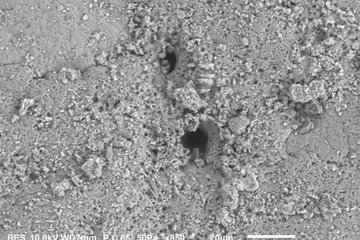Active Gene mutates faster
Researchers have discovered how transcription can influence mutagenesis

- Exceptionally high mutation rate: In the genome of Pseudomonas fluorescens a mutation within the promoter for the gene rpoS occurs predictably across bacterial cultures.
- Inhibition of activity: When transcriptional activation of the rpoS promoter was inhibited, the mutation rate dropped by approximately 60-fold.
- Role of promoter activity in the mutation process: This discovery suggests that similar transcription-induced mutational hotspots may occur at other promoters and in other bacterial species.
Researchers have dentified an extreme mutational hotspot within the genome of Pseudomonas fluorescens, providing unprecedented insight into the relationship between gene regulation and mutation rates. The findings could have broad implications for understanding bacterial evolution, adaptation, and antibiotic resistance. The research, conducted by Andrew D. Farr, Christina Vasileiou, Peter A. Lind, and Paul B. Rainey, reveals that mutations in the promoter region of the rpoS gene occur at an astonishing rate—approximately 5,000 times higher than expected. The mutation was observed across multiple independent bacterial populations, occurring predictably in 137 out of 153 replicate cultures.
This mutation is directly linked to transcriptional activity: the more a promoter is active, the more frequently mutations appear in this promoter. In experiments where transcriptional activation was blocked, the mutation rate dropped nearly 60-fold, demonstrating a clear causal relationship between gene expression and mutagenesis. “Our findings highlight an unexpected link between gene regulation and mutation rate, suggesting that certain genomic regions may be more prone to mutational change,” said Andrew Farr, lead author of the study. “This could have important implications for understanding bacterial adaptation and antibiotic resistance evolution. We are currently investigating the precise molecular interactions that cause these high mutation rates and are now building principles to predict where these mutational hotspots may occur.”
Implications for Evolution and Antibiotic Resistance
Mutations are fundamental to evolutionary change, driving the emergence of new traits, species, and, in some cases, resistance to antibiotics. This study provides strong evidence that transcriptional activation can locally increase mutation rates, potentially influencing bacterial genome evolution and the development of antibiotic resistance.
By uncovering a mechanism by which gene activity itself influences mutation rates, this research challenges traditional views on mutagenesis and opens new avenues for studying genome evolution in bacteria and beyond. Understanding the molecular basis of these hotspots could help predict where and how mutations might occur in other microbial species, offering new strategies to mitigate bacterial adaptation to environmental pressures, including antibiotics.












